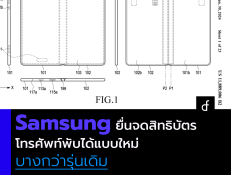
How to customize a template to fit your brand professionally
2024-10-10 11:35:58
Using a template in design is a good starting point, but it may not fully reflect your brand. Customizing the template to fit your brand will help create consistency in communication and increase credibility. Here are ways to professionally customize a template to fit your brand.

Apply the brand colors (Brand Colors)
- Choose colors that match the brand: Use colors that are unique to the brand, such as the logo color or the main colors you regularly use in documents and advertisements. Consistent colors will help create recognition and make the brand look professional.
- Using complementary tones: If you want to add more colors, choose complementary tones that match the main color to create balance in the design.
Use a font that reflects the brand. (Brand Fonts)
- Change the font in the template: Use a font that matches the brand's image, such as the font you use in the logo or other documents, for consistency. If your brand has predefined fonts, use those fonts to customize every part of the template.
- Be careful not to use too many fonts: Limit the use of fonts to no more than 2-3 types to avoid clutter and to make the design look professional.
Adjust the logo and images to be consistent. (Logo and Images)
- Add your logo: Replace the logo in the template with your brand's logo in an appropriate position, such as on the header or at the bottom of the page.
- Choose images that represent the brand: If the template has space for images, replace them with pictures that reflect the brand's products or services, or use images that have colors and styles consistent with the brand.
Adjust the layout appropriately.
- Choose a layout that matches the content: A template with a simple layout and properly arranged information will help make the design look organized. However, it may need to be customized to fit your content, such as changing the position of headings or adding/removing the number of text boxes or images.
- Don't neglect white space: Use white space appropriately to make the design look clean and to better emphasize the main content.
Create a consistent style. (Consistency)
- Emphasize the use of a consistent theme: Communication through patterns, colors, fonts, and logos must be consistent in all designs to create brand identity, such as using the same color tones and fonts on every page.
- Check other elements: Ensure that every element of the template aligns with the brand, such as icons, graphics, and borders that match the overall style.
Adjust the message to align with the brand's voice. (Brand Voice)
- Edit the content to match the brand's style: Change the text in the template to align with the tone the brand uses. For example, if your brand has a formal image, the text should use formal language. But if your brand is friendly, the text should appear natural and approachable.
- Use memorable words: Place the main message or brand slogan in important positions, such as the main headline or sections that need emphasis.
Customize to suit the target audience. (Audience Focus)
- Think about the end users: Customize the template to align with the target audience you want to communicate with. For example, choose colors and images that attract your target audience, and make the content easy to read and engaging.
- Avoid overly complex designs: Complex designs can confuse the target audience. Maintain simplicity while looking good to make the brand appear professional.

Customizing a template to fit a brand professionally is not just about changing colors or fonts, but also about creating consistency in every element to ensure clear communication with the target audience and effectively convey the brand's identity.
Leave a comment :
Recent post

2025-01-10 10:12:01

2024-05-31 03:06:49

2024-05-28 03:09:25
Tagscloud
Other interesting articles
There are many other interesting articles, try selecting them from below.

2024-10-10 09:18:31

2024-02-02 02:51:13

2025-01-25 06:16:24

2024-02-19 05:37:43

2024-08-19 10:33:55

2025-01-30 05:25:36

2023-09-05 11:33:57

2024-10-28 02:17:59

